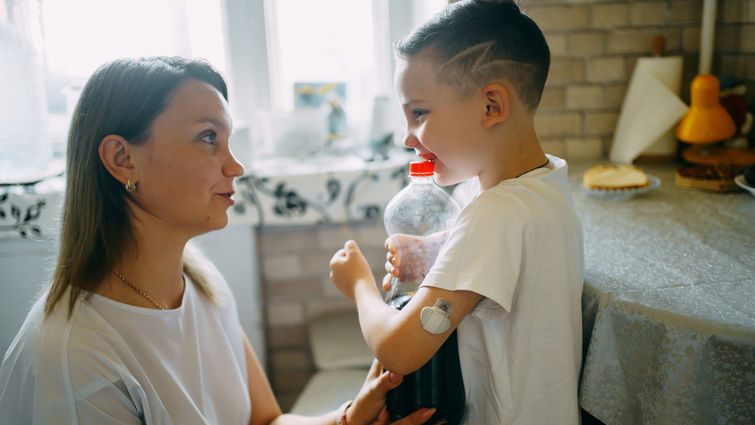

Diabetes management for children has made significant strides thanks to technological advances and innovative treatments. Eric Tsay, MD, a pediatric endocrinologist at Loma Linda University Health Children’s Hospital, shares insights on how these developments have reshaped care for children with diabetes.
Understanding Type 1 vs. Type 2 Diabetes in Children
Type 1 diabetes is an autoimmune condition where the pancreas cannot produce insulin, a hormone essential for regulating blood sugar levels. Patients with Type 1 diabetes require lifelong insulin therapy.
Type 2 diabetes is often linked to lifestyle factors like diet and exercise. While more commonly associated with adults, it’s appearing in younger children as obesity rates rise.
Tsay has seen cases of Type 2 diabetes in patients as young as eight. “For these young patients, lifestyle changes can sometimes put the disease into remission, especially with family support and significant dietary adjustments,” said Tsay.
Technology Transforming Diabetes Care
Two main technologies have revolutionized diabetes management: Continuous Glucose Monitors (CGMs) and insulin pumps. CGMs, small wearable devices, offer real-time monitoring by continuously tracking blood glucose levels.
“Patients can check their blood sugar levels without having to prick their fingers multiple times a day, and the data is available to patients and their families in real-time through apps,” said Tsay.
These small, discreet devices are waterproof and suitable for various physical activities, even staying secure through swimming and contact sports.
CGMs have become an essential tool for families, allowing them to monitor their child’s glucose levels remotely. This real-time feedback helps manage diet and insulin needs and alleviates the stress of frequent testing, especially at night. “If blood sugar levels spike after eating, patients can adjust their food choices — maybe avoiding that candy or dessert,” he said.
Insulin pumps are also transforming care. Instead of multiple daily injections, these pumps provide a steady flow of insulin with adjustments based on blood sugar readings. Many modern pumps can work in tandem with CGMs, making real-time adjustments to insulin delivery.
“Adolescents, young children, and even toddlers can find it overwhelming to manage diabetes. Insulin pumps relieve much of the daily burden,” said Tsay.
Tsay is optimistic about the future of pediatric diabetes care. As these devices improve, they become more compact, durable, and user-friendly. CGMs and insulin pumps are gaining features similar to smartphones, with regular updates that make them smarter and faster each year.


